Abstract
BACKGROUND: Framingham Study findings suggest that total cholesterol (TC):High density lipoprotein cholesterol (HDL-C) ratio is a useful summary of the joint contribution of TC and HDL-C to coronary heart disease (CHD) risk. Information on the distribution of TC:HDL-C in the US population is limited to selected populations and the relationship of the ratio distribution and its correlates has received little attention. METHOD: TC/HDL-C ratios were examined in a representative sample of the United States adult population ages 20 to 74 years, between February 1976 and February 1980 during NHANES II, using stratification and multivariate regression analyses. RESULTS: Age-adjusted mean ratios were higher in men compared with women and were higher in Whites compared with Blacks. White men had the highest TC/HDL-C mean ratios. These relationships remained after stratification by age, education, body mass index, alcohol use, cigarette smoking, and physical activity. Using multivariate analyses, the ratios were positively related to BMI, age, and smoking; and negatively related to female sex, alcohol use, being Black, and physical activity. CONCLUSIONS: Using a ratio reference point of greater than or equal to 4.5 from the Framingham study, at least an estimated 44 million persons ages 25 to 74 years in the US were found to be at higher risk of developing coronary heart disease.
Full text
PDF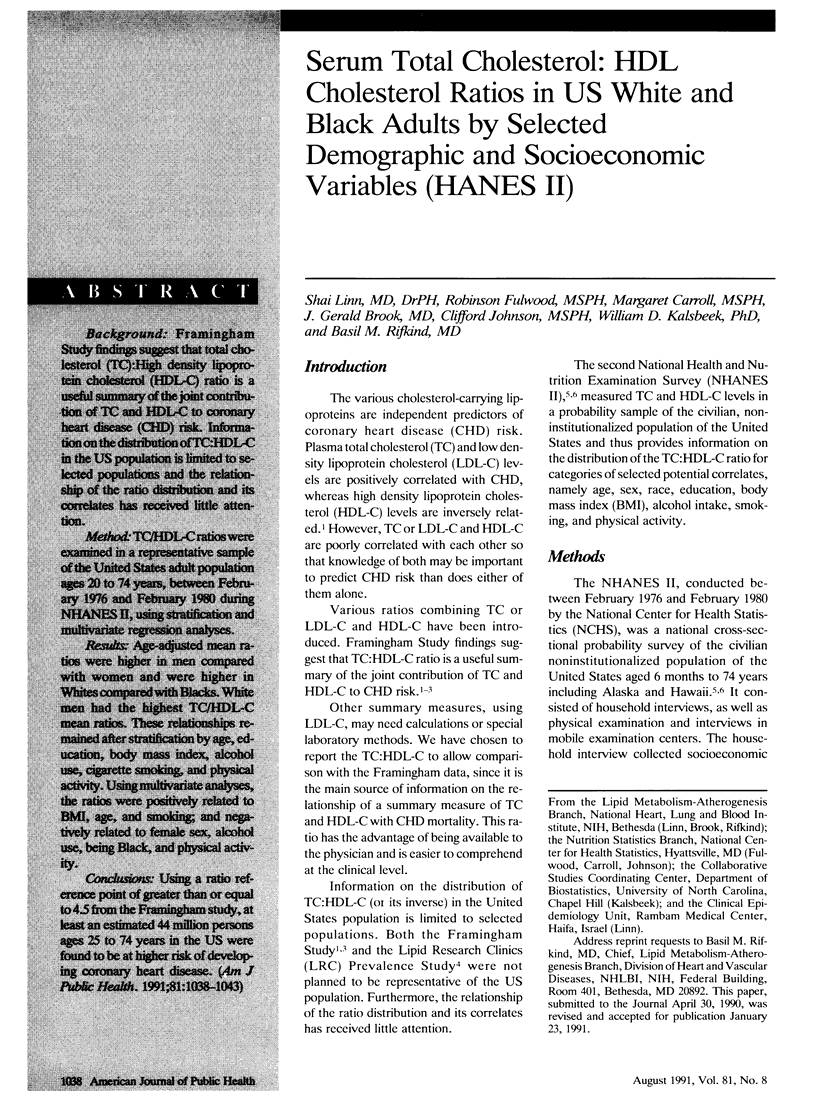
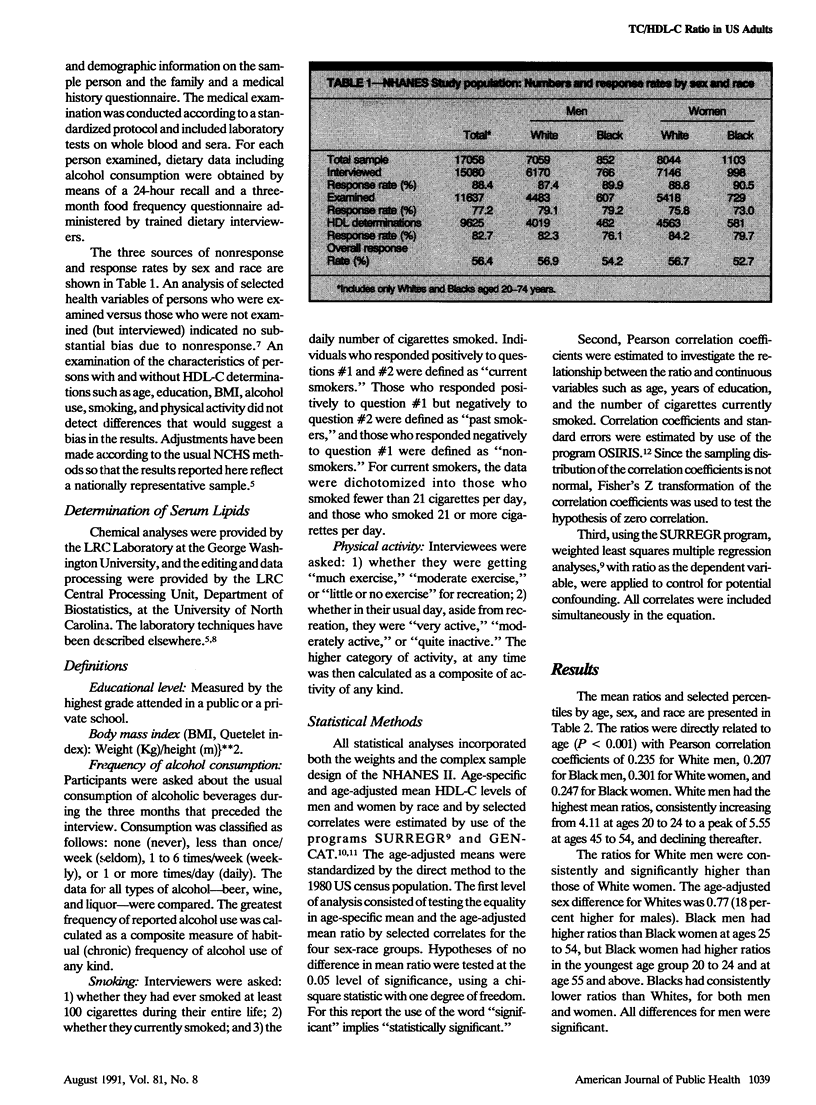
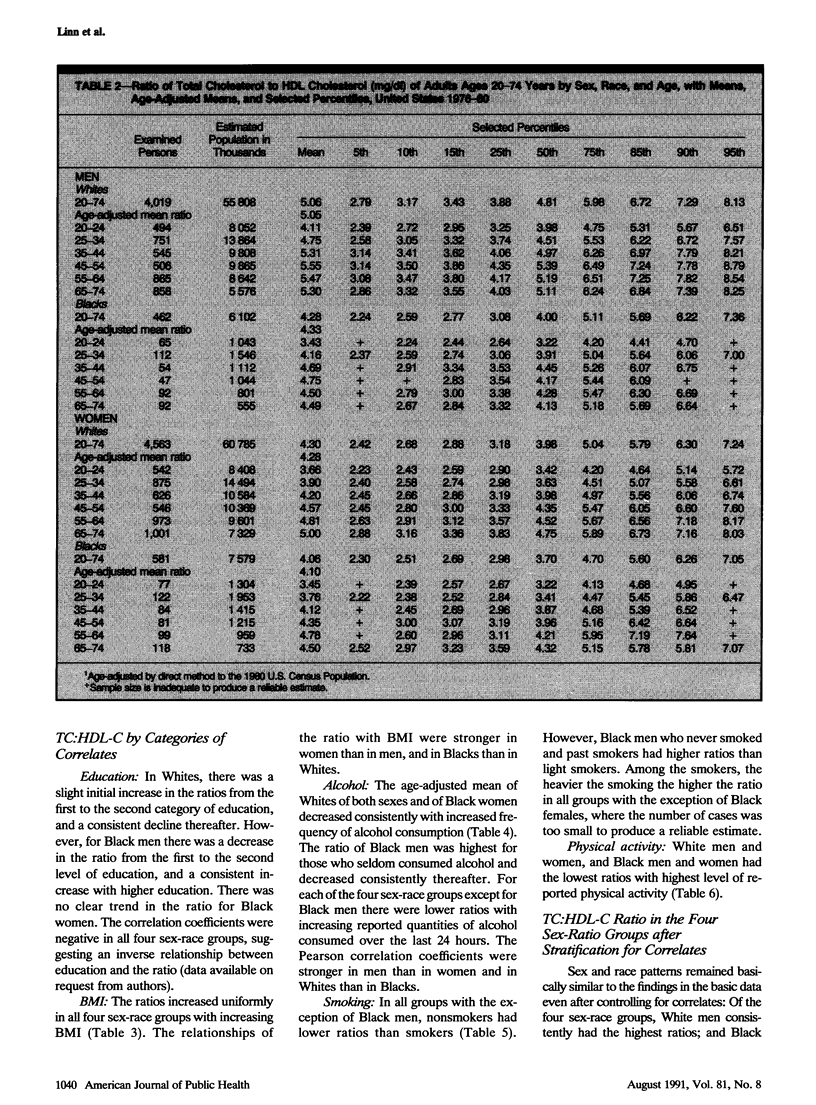
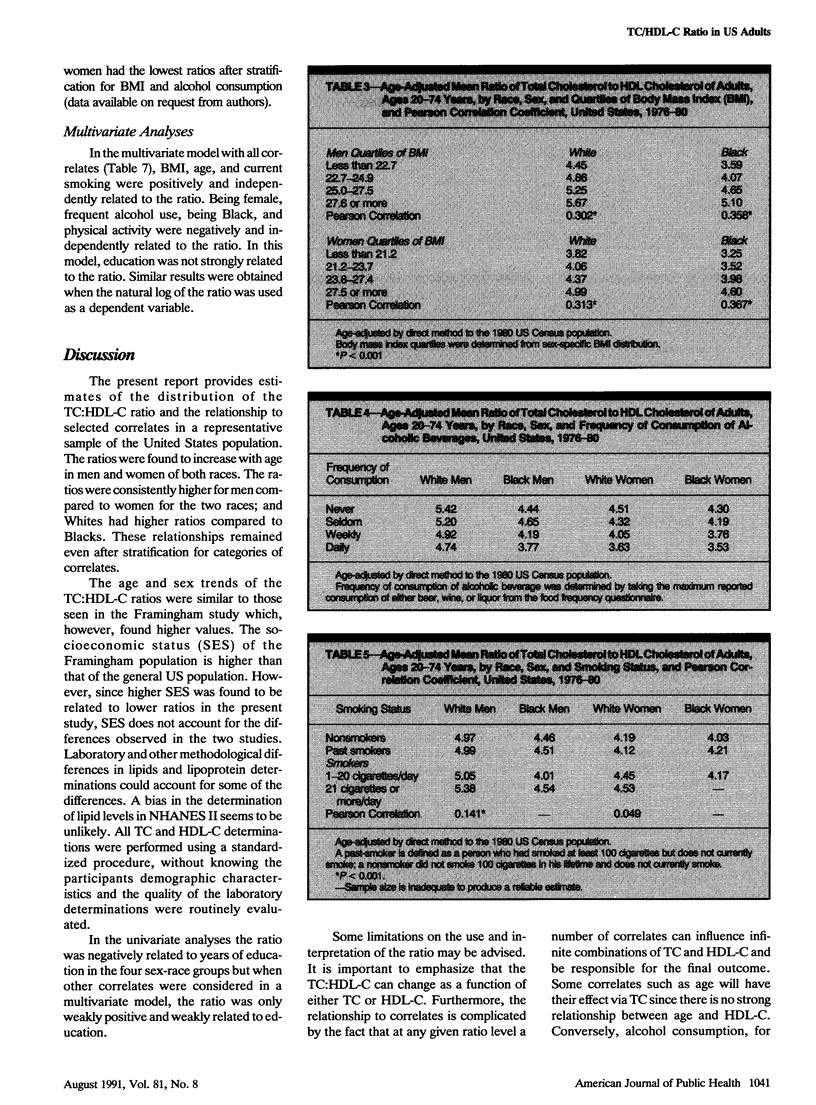
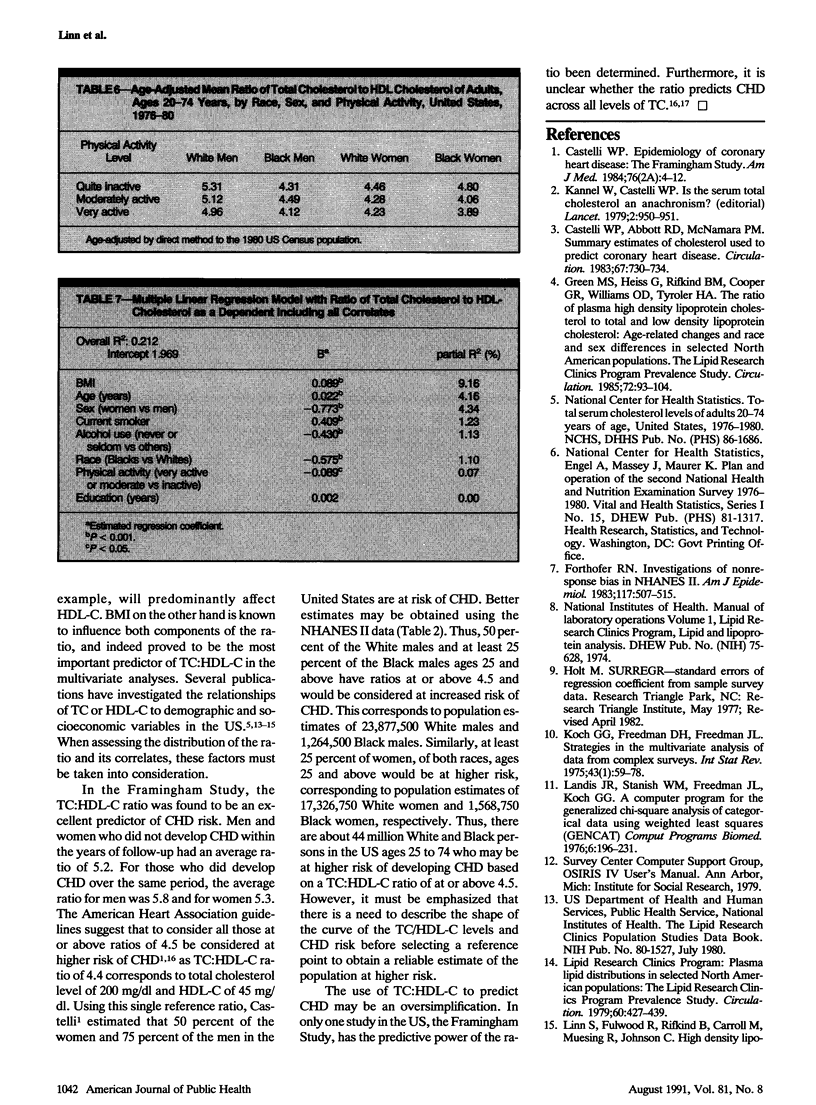
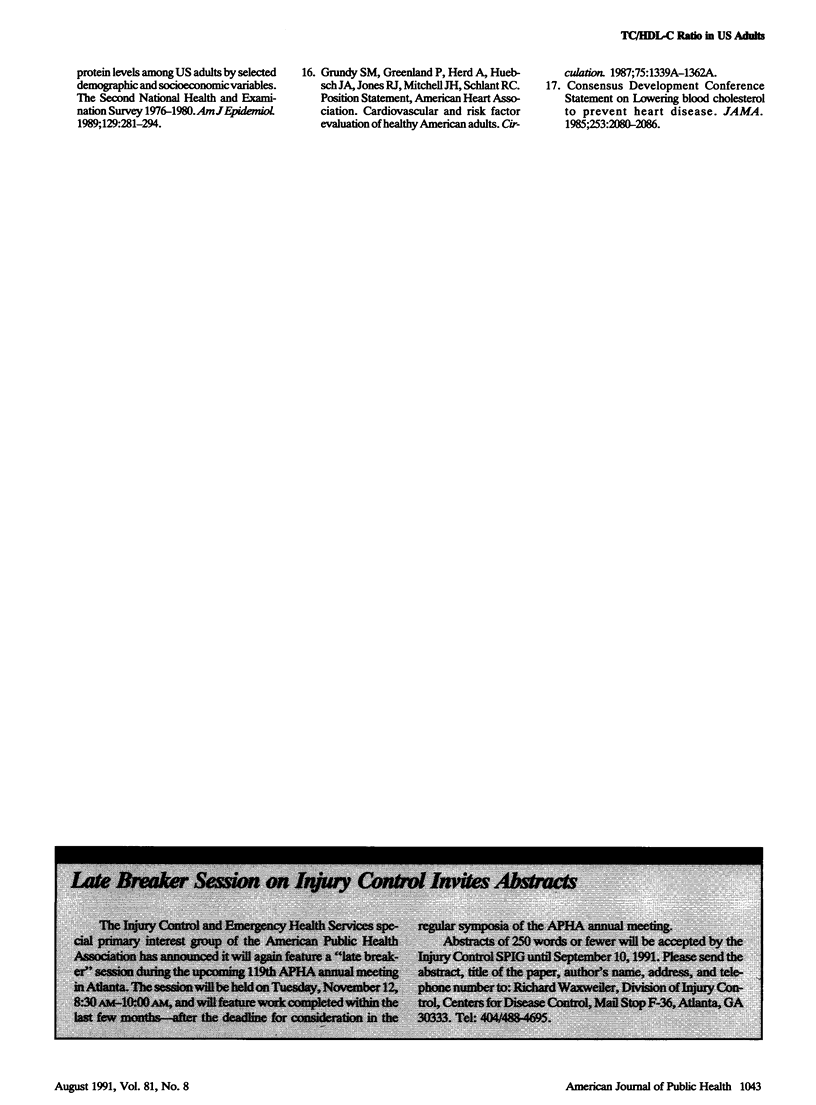
Selected References
These references are in PubMed. This may not be the complete list of references from this article.
- Castelli W. P., Abbott R. D., McNamara P. M. Summary estimates of cholesterol used to predict coronary heart disease. Circulation. 1983 Apr;67(4):730–734. doi: 10.1161/01.cir.67.4.730. [DOI] [PubMed] [Google Scholar]
- Castelli W. P. Epidemiology of coronary heart disease: the Framingham study. Am J Med. 1984 Feb 27;76(2A):4–12. doi: 10.1016/0002-9343(84)90952-5. [DOI] [PubMed] [Google Scholar]
- Forthofer R. N. Investigation of nonresponse bias in NHANES II. Am J Epidemiol. 1983 Apr;117(4):507–515. doi: 10.1093/oxfordjournals.aje.a113568. [DOI] [PubMed] [Google Scholar]
- Green M. S., Heiss G., Rifkind B. M., Cooper G. R., Williams O. D., Tyroler H. A. The ratio of plasma high-density lipoprotein cholesterol to total and low-density lipoprotein cholesterol: age-related changes and race and sex differences in selected North American populations. The Lipid Research Clinics Program Prevalence Study. Circulation. 1985 Jul;72(1):93–104. doi: 10.1161/01.cir.72.1.93. [DOI] [PubMed] [Google Scholar]
- Grundy S. M., Greenland P., Herd A., Huebsch J. A., Jones R. J., Mitchell J. H., Schlant R. C. Cardiovascular and risk factor evaluation of healthy American adults. A statement for physicians by an Ad Hoc Committee appointed by the Steering Committee, American Heart Association. Circulation. 1987 Jun;75(6):1340A–1362A. [PubMed] [Google Scholar]
- Kannel W. B., Castelli W. P. Is the serum total cholesterol an anachronism? Lancet. 1979 Nov 3;2(8149):950–951. doi: 10.1016/s0140-6736(79)92638-2. [DOI] [PubMed] [Google Scholar]
- Landis J. R., Stanish W. M., Freeman J. L., Koch G. G. A computer program for the generalized chi-square analysis of categorical data using weighted least squares (GENCAT). Comput Programs Biomed. 1976 Dec;6(4):196–231. doi: 10.1016/0010-468x(76)90037-4. [DOI] [PubMed] [Google Scholar]


